Essay about Clothes and Personality
Introduction.
Does fashion make personality? The way you dress says a lot about the kind of individual you are. The fashion you decide to go with should reveal your desires, interests, ambition, and background. Everyone is unique in terms of personality and interest, and therefore, it is important for a person to wear what emphasizes who they are. There are people who are wild and like to explore, while others prefer styles that add nostalgia and romance (Bell 45).
As clothes define a person, this essay addresses how crucial it is to know who you are so that you can choose a style that fits your personality. In addition, be sure to be consistent with your style to create a signature that describes you as an individual. The fashion we choose to go with should match our personality because people can easily judge us from our dress code (Bell 47). In this essay about clothes and personality, I will discuss how fashion makes an individual’s character.
While most individuals find it easy to conform to other people’s fashion, it is extremely important for people to identify what suits them best and incorporate that in their own style to distinguish their personality. In fashion, being different is an important aspect because it helps individual personality to stand out.
In the movie the “Devil wears Prada”, which is created around fashion, we can easily identify roles of the characters by observing their dress codes. While Anna is dressed in simple clothes that do not have a voice in fashion, Miranda is dressed in timeless fashion that gives her the rich woman’s look ( The devil wears prada ). On the other hand, Andrea was given an over the edge fashion that showed the outgoing and careless look in the movie ( The devil wear prada ).
In addition to this, it is not difficult to notice that Field had a good idea about fashion and personality based on the outfits and make up for her characters. The looks and fashion in this movie was able to give the characters stage personalities that were outstanding from the other. This is a clear indication that what we put on talks much about who we are.
Although, it takes time to develop one’s style and fashion it is important for individuals to be in a position to say who they are through their dressing. Having individual dress code helps in boosting self-confidence and brings comfort (Bell 113). Your image is highly dependent on how you dress on a regular basis because people learn to associate you with the kind of fashion you embrace.
When it comes to fashion and personality, make sure that when people see a certain fashion they can actually identify that look with your personality. Learn to leave a mark in what is in your wardrobe to ensure that your clothes speak loud about the kind of a person you are; let your clothes define you more than words can do.
People who are dramatic and casual like to make strong fashion statements also tend to be stunning and attention seeking (Musselman and DeGregori 47). For this kind of personality, choose bold colors, straight lines, and unique outstanding jewelry to match your outfits (Musselman and DeGregori 47). A dramatic personality seeks attention at all times and wants to make a strong statement (Bell 121).
A dramatic personality goes well with clothes that are fashionable and overshadow other people. Their class of fashion is able to help people notice their personality even for those meeting them for the first time. However, if someone with a dramatic personality decided to dress like a classic personality he or she would look out of place. Therefore, it is advisable to have fashion that clearly highlights who you are from far.
For those people with a serious personality, and mostly like having a classic look, they should have clothes with straight lines, neutral colors such as gray, white and black, flat shoes, and striped tops (Musselman and DeGregori 56). This is what makes them stand out as no nonsense people and enables them to get people’s attention at first glance. In addition, this kind of fashion portrays people with very strong personality, focused and in control (Bell 78).
However, when blending fashion with personality it is wise to choose clothes that match your body shape. Clothes should highlight on your strong points and conceal physical faults (Musselman and DeGregori 94). Women with a classic personality are conservative and prefer simple fashion that is well balanced. In addition, they like simple accessories that stand the test of time such as plain gold chain. This type of fashion screams that “am intelligent, simple, and focused” (Bell 113).
On the other hand, there is ingénue and romantic personality that always appears young and girlish with a small body (Musselman and DeGregori 73). Young girls always look cute and charming because of their small physique. In addition, they have a love for things that are nice and more feminine such as fragile jewelry, ruffles, lace, and soft fabrics (Musselman and DeGregori 77).
Because of their personality, such people are likely to be taken less serious and considered childish by most people. This is the weakness associated with this personality but people can be able to combine their dressing with other aspects to make their personality clearly represented without misjudgment. However, this personality enables women to be more feminine and attractive compared to other personalities hence if it is combined with other types of fashion it creates a balanced style.
The way we dress says so much about our personality especially in instances where we have to make a first impression. Our fashion speaks volumes about the kind of people we are in terms of interests, ambitions, and aspirations. A person in jeans and t-shirt appears to be relaxed while, one in a suit creates the impression of focus, alert and serious.
On the other hand, a person in an inadequate dress creates the impression that she is wild, free spirited and easy to hang around. People can draw assumptions about us or our social preference from the way we dress. Therefore, it is important for people to make independent choices for fashion to ensure that we create the right impression about ourselves. While it may not be possible for one to pick a single style or fashion, it is wise to incorporate some aspects of other fashions to emphasize on their personality.
For instance, if you are dramatic and realize that people brush you off you can add some elements of classic in your style to achieve the desired results. Some classic fashion elements will let people respect and take you a serious individual. However, if you are a classic and people are not able to see your fun and charming side, adding some element of dramatic personality in your fashion is more appropriate.

Works Cited
Bell, Allison. Fearless Fashion (What’s Your Style?). Hempstead: Lobster Press, 2004. Print.
Musselman, Jennifer, and Patty DeGregori. The Hip Girl’s Handbook for the Working World: Work What You Got to Get What You Want. San Francisco: Council Oak Books, 2005. Print.
The devil wears prada, Dir. David Frankel. Perf . Anne Hathaway, Meryl Streep. Lauren Weisberger. 2006. Film.
- Chicago (A-D)
- Chicago (N-B)
IvyPanda. (2023, October 30). Essay about Clothes and Personality. https://ivypanda.com/essays/fashion-2/
"Essay about Clothes and Personality." IvyPanda , 30 Oct. 2023, ivypanda.com/essays/fashion-2/.
IvyPanda . (2023) 'Essay about Clothes and Personality'. 30 October.
IvyPanda . 2023. "Essay about Clothes and Personality." October 30, 2023. https://ivypanda.com/essays/fashion-2/.
1. IvyPanda . "Essay about Clothes and Personality." October 30, 2023. https://ivypanda.com/essays/fashion-2/.
Bibliography
IvyPanda . "Essay about Clothes and Personality." October 30, 2023. https://ivypanda.com/essays/fashion-2/.
- 20th Century Dress and Culture – Punk Fashion
- Fashion in the 1960’s
- Fashion Goes Round in Circles
- Balenciaga and Bottega Veneta
- Prada Fashion Sense and Christian Dior Fashion Sense
- Coach's Designer Purses: Product Analysis
- Cristobal Balenciaga and His Significant Impact on Fashion
- Liz Claiborne Inc. and Its Portfolio of Brands
- How We Teach
Our five-pronged approach focuses on your individual strengths to develop your unique qualities towards making you an exemplary pi- designer.
- Pre college Course
- How we teach
- Life at iiad
- IIAD & Industry
- Online fee payment

Anushka Das
Fashion and Identity: An Exploration of Clothing’s Role in Shaping Personal and Cultural Identities
Table of Content:
- The Connection between Fashion and Personal Identity
- Cultural Identity and Fashion
- Fashion and Gender Identity
- Fashion and Subcultures
- The Role of Fashion Industry in Identity Formation
- In Retrospect
Fashion has always been a crucial aspect of human existence, influencing the way individuals present themselves to the world and communicate their identities. Clothing choices can reflect personal tastes, beliefs, values and cultural backgrounds, making fashion a powerful tool for expressing one's identity. A person makes a conscious choice to be accommodated in a particular setting. People thus experience an overwhelming sense of group dynamics over individual identity and are attracted to the group. However, their personal identity is a hindrance to finding a comfortable place in the group.
We often observe that in a religiously affiliated school, students may be forced to change dress codes to fit in at that particular school. Suits and ties become a dress code for all employees to fit into the company policy.
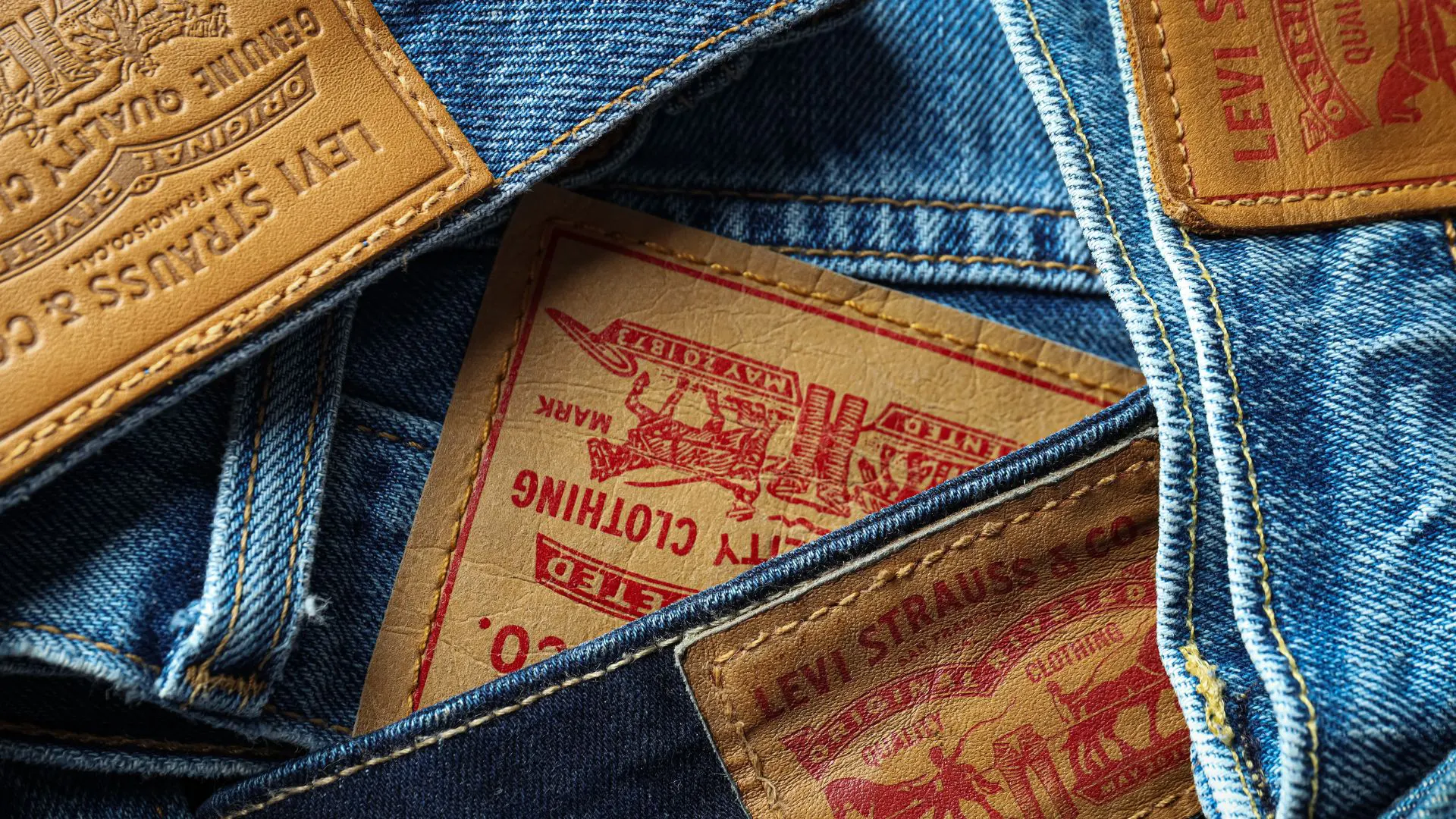
In the world of fashion, the word "acceptability" is prevalent. One main reason for this is the mass production of fashion labels that target mass sales. Fashion labels involved in such marketing are enforcing a fashion sense on the unsuspecting public. Design labels like Zara, H&M, and many others open fashion stores in many parts of the world with the mass market as their target. The main reason people wear these brands is because of the prestige attached to them and the strong sense of fashion that comes with wearing them, which moulds their identities.
Therefore, all employees are forced to change their individual identities when dressing. Involuntary conformity can also happen when a person lacks knowledge and thus seeks it from external (group) sources. In such a case, a person is unknowingly influenced by social dynamics and eventually changes behaviour as society dictates.
In an effort to feel fashionable, many people buy and wear Fashion brands not with respect to their personal identity but with respect to fashion.
The social and economic order that encourages the acquisition of fashion is focused on quantity (and unfashionable clothing) rather than quality. This has a negative impact on fashion wear that can not enhance people’s individual identities. On the other hand, it leads to the enhancement of social identity.
This analytical essay aims to delve into the intricate relationship between fashion and identity, exploring how clothing choices shape personal and cultural identities and the broader implications of these connections. Through an examination of various perspectives and case studies, this essay seeks to shed light on the multifaceted nature of fashion as a form of identity expression.
I. The Connection between Fashion and Personal Identity
1.1 self-expression through clothing.
Fashion serves as an expressive medium, allowing individuals to communicate their personalities, tastes and individuality to others. People often use clothing as a canvas to present the image they want to portray, signalling their uniqueness, values and interests to the outside world. Fashion's versatility enables individuals to adapt their style to different situations and environments, reflecting their evolving sense of self.
1.2 Fashion as a Form of Empowerment
Clothing can empower individuals by enhancing their confidence and self-esteem. When people feel comfortable and confident in their attire, they are more likely to project a positive self-image, which can significantly impact their interactions and relationships with others. The transformative power of fashion can help individuals overcome self-doubt and embrace their true selves.
II. Cultural Identity and Fashion
2.1 cultural signifiers in clothing.

Fashion often serves as a visible expression of cultural identity, as clothing choices can reflect a person's ethnic background, traditions, and heritage. Specific clothing styles, patterns, and colours can act as powerful cultural signifiers, conveying a wealth of information about a person's identity and cultural affiliations.
2.2 Cultural Appropriation in Fashion
Halloween costumes
While fashion can be a means of celebrating cultural diversity, it can also lead to cultural appropriation when elements of one culture are commodified and used out of context by another culture. This section will explore the fine line between appreciation and appropriation, emphasising the importance of cultural sensitivity and respect in fashion.
III. Fashion and Gender Identity
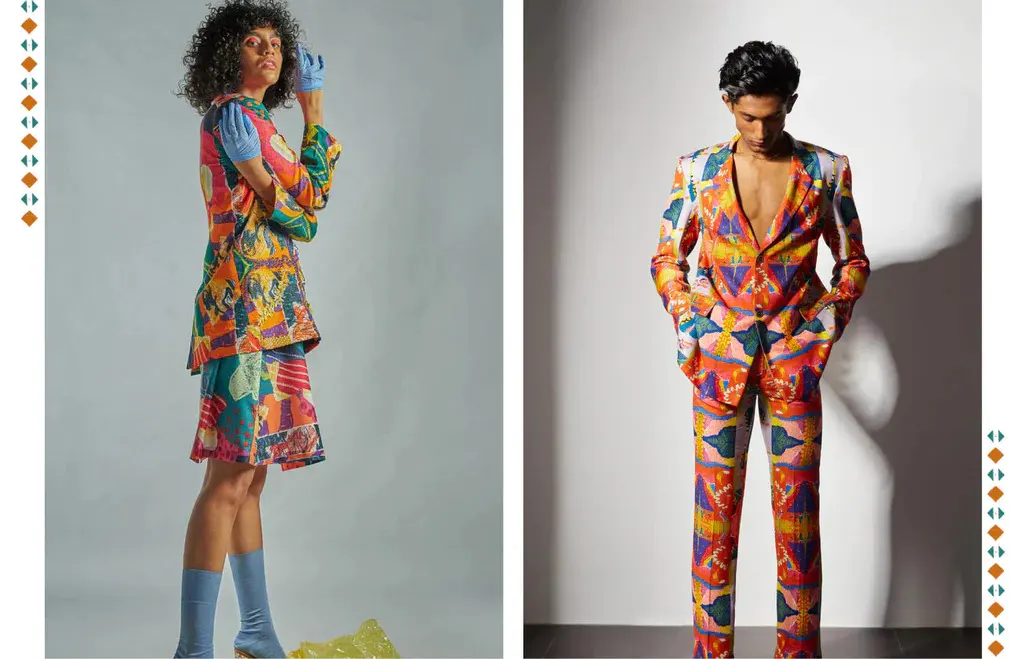
3.1 Fashion and Gender Norms
Historically, fashion has played a significant role in reinforcing societal gender norms. Clothing choices have been heavily influenced by cultural expectations surrounding gender, further leading to the establishment of distinct male and female dress codes. However, in recent years, there has been a growing movement towards gender-fluid fashion , challenging traditional notions of masculinity and femininity.
3.2 Fashion and LGBTQ+ Identity
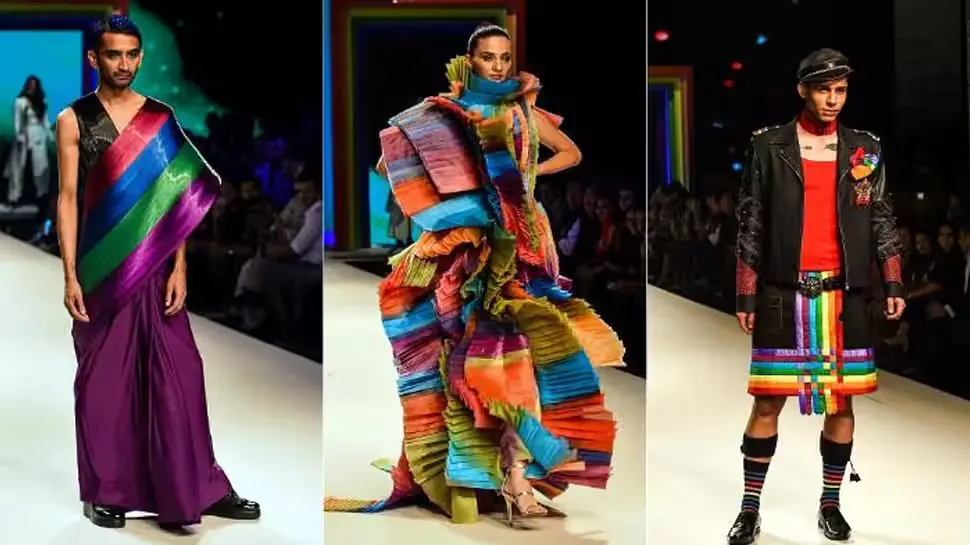
Fashion has become an essential tool for many LGBTQ+ individuals to express their gender identity and sexual orientation. Clothing can offer a safe and empowering space for self-discovery and self-expression, allowing individuals to embrace their authentic selves and connect with like-minded communities.
IV. Fashion and Subcultures
4.1 subcultural identities and dress codes.
Subcultures often emerge as a response to mainstream culture, forming their own unique identities and aesthetic codes. The power of fashion to mould individual identities cannot be ignored. Fashion had and still has substantial influence over one's personal identity and, to a great extent, influences what a person becomes. Clothing plays a pivotal role in subcultures, distinguishing members from the mainstream and fostering a sense of belonging within the group.
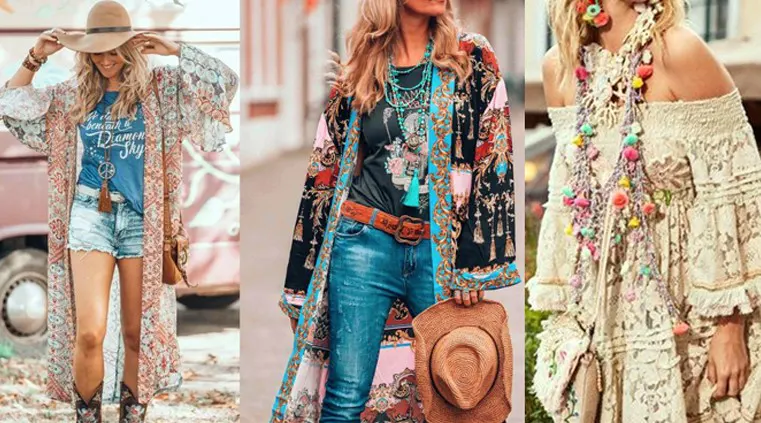
4.2 The Influence of Subcultures on Mainstream Fashion
The fashion industry has frequently drawn inspiration from various subcultures, adopting elements of their style and incorporating them into mainstream fashion. This section will analyse how subcultures have shaped mainstream fashion and discuss the ethical considerations surrounding this process.
V. The Role of Fashion Industry in Identity Formation
5.1 fashion media and its impact.
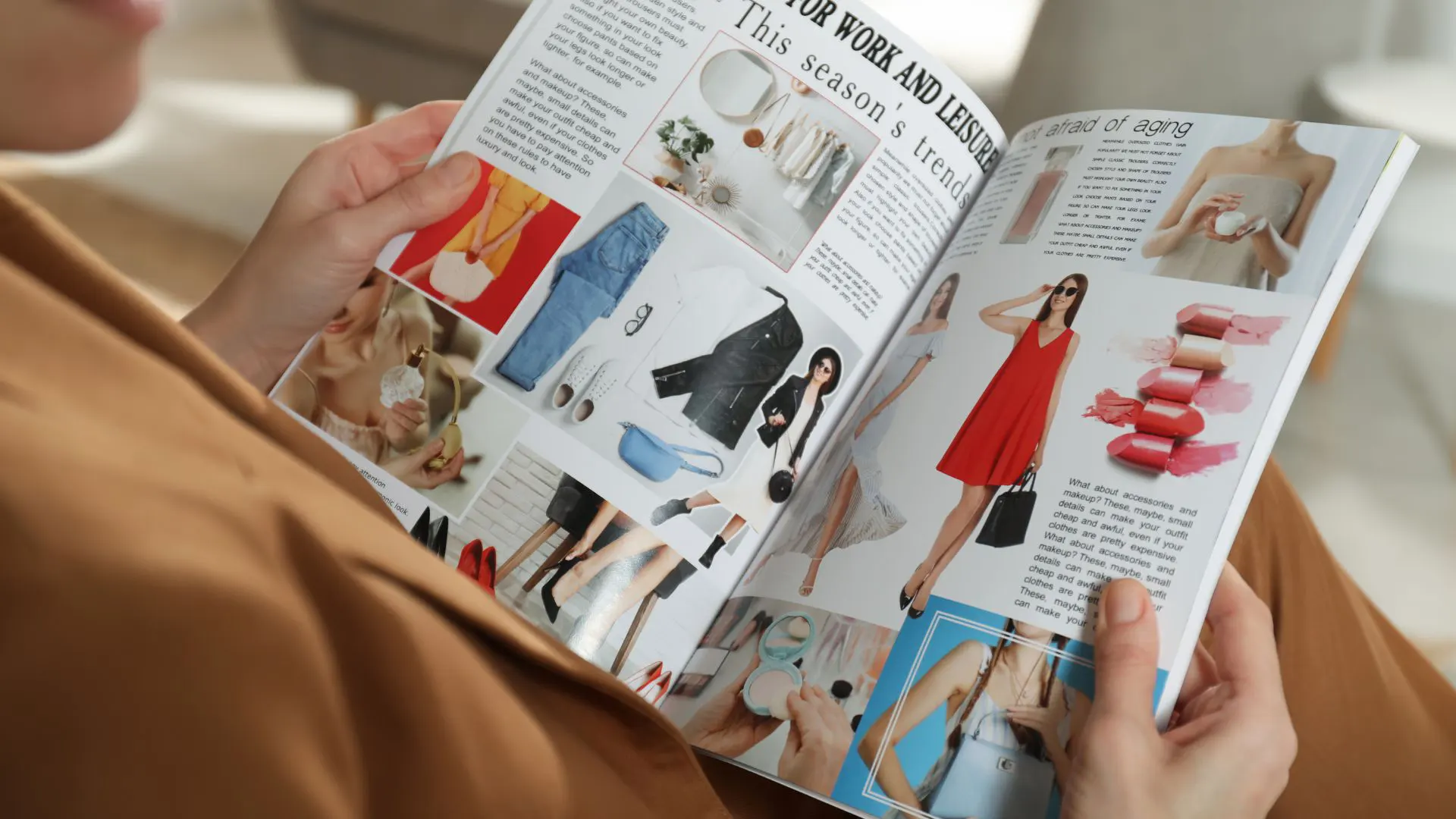
Fashion media, including magazines, blogs, and social media platforms, significantly influence our perceptions of fashion and, consequently, our understanding of identity. The portrayal of diverse identities in fashion media can positively impact individuals' self-esteem and foster a more inclusive industry.
Fashion's intricate relationship with identity goes beyond superficial appearances, delving into the core of who we are as individuals and members of diverse cultural and social groups. Clothing choices serve as a powerful means of self-expression, facilitating personal growth, empowerment, and the celebration of cultural diversity. Fashion's dynamic nature allows it to reflect and influence societal shifts, challenging traditional gender norms and promoting inclusivity. As the fashion industry continues to evolve, embracing sustainability and cultural sensitivity will be vital to fostering a more authentic and harmonious connection between fashion and identity.
The relationship between man and fashion cannot be separated, and this can be sufficiently concluded. The relationship is mutually dependent. The role of people in the fashion industry is significant. For a long time, men have used fashion as a means to portray their individual identities. People's choice of clothes has always been the ones that enhance their personal characteristics.
A man with dreadlocks and gypsy outfit embodies the free spirit and communicates the message about personal beliefs and attitudes.
Thus, if there is an indication of removing a man’s dress, it is looked upon as an attempt to strip the person’s identity. As such, personal dressing style signifies personal identity. However, fashion cannot be ignored in the way it influences a person’s character. There have been instances when removing a person’s unique fashion style erodes their personal identity, leaving them exposed to group dynamics.
Advocacy groups in ethical fashion have been saying that there is a need to reverse mass consumerism not only to protect individual identities but also to protect the environment. Recycling and reusing fashion design and materials explains that there is a way out of the current wasting of personal identity in society.
Check Out What’s Next
Interested in reading more? Other recent articles by Anushka Das discuss crafting an effective fashion brief . On a deeper note she also talks about introduction to the Indian textile industry , muga silk , and the history of the Indian textile industry . In another vein, she also speaks of the benefits of fast fashion in sustainability .
Need to know about top fashion designers of 2023? Have a look at these 5 Indian Fashion Designers and their luxurious flagship stores . Don't miss out on Indian Fashion Designers enroute Recycled Couture – Lakme Fashion Week X FDCI.
Watch now the story of Denim through cotton flowers, yarn, weaving and dyeing.
About The Author
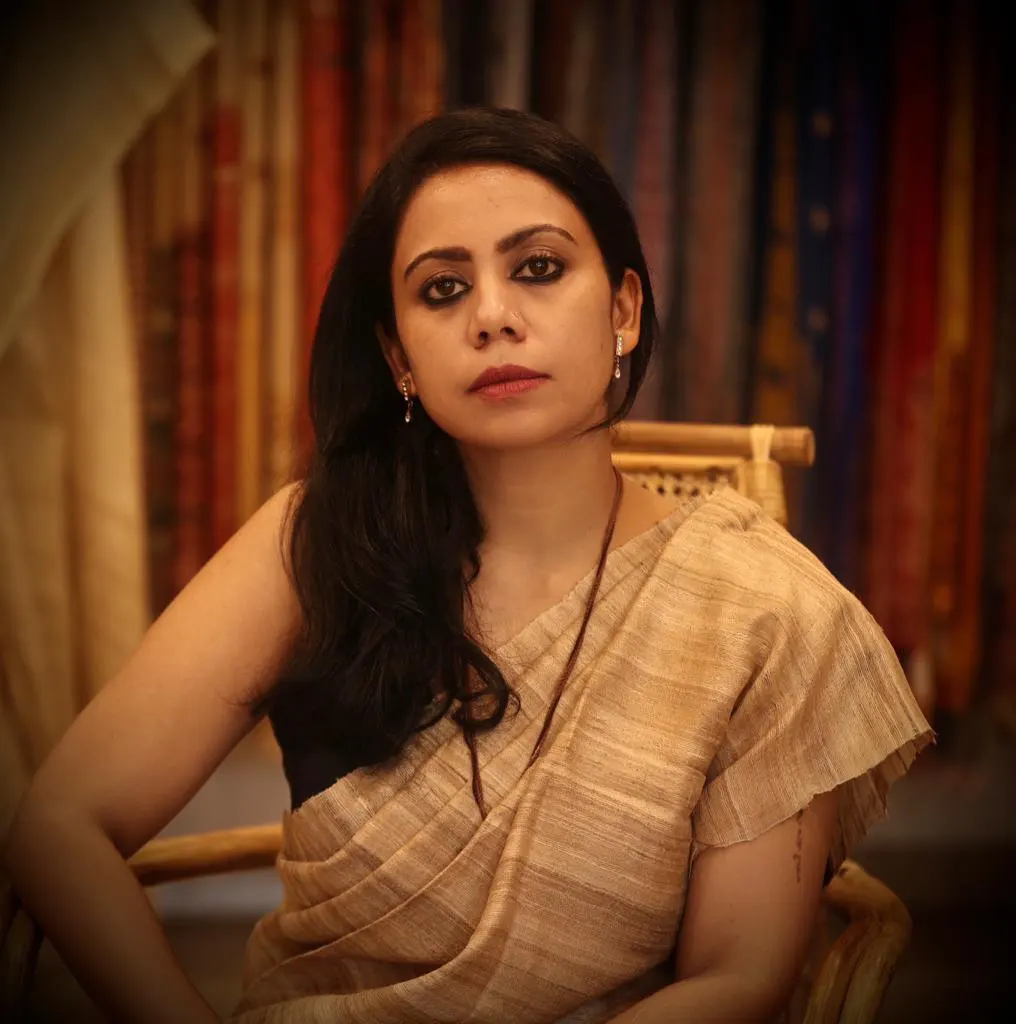
Anushka Das, a distinguished Textile Design graduate from NIFT, New Delhi, boasts over 15 years of expertise in the textile and fashion domain. Having worked alongside esteemed designers Neeru Kumar and Ritu Kumar as Head Designer, she led numerou ... s design collections for both domestic and international clients. In 2010, she launched her label, Anushka-Annasuya, emphasizing Indian aesthetics fused with contemporary trends. Anushka collaborates with renowned brands like Fabindia, Jaypore, and Ajio for apparel and home design. During the pandemic, she co-designed the Anzen and Fiori range of fabric masks to support handloom weavers. Her remarkable contributions extend to projects with the Ministry of Textiles and various NGOs, uplifting artisans and promoting traditional crafts. Anushka’s passion for sustainability reflects in her brand’s philosophy of zero waste, and she continually strives to integrate crafts into modern lifestyles. As a respected jury member and consultant, shleaves an indelible mark on the fashion landscape.
What is Interior Architecture & Design?
Did you know that we spend about 90% of our time indoors! We use the built environment, especially interior spaces,…

Understanding Communication Design
We live in a hyperlinked, hyper-connected world! Whatsapp, Instagram, Snapchat, Facebook, Youtube, Google, have become verbs that represent “things we…

Learning About the Business of Fashion
The moment one hears the word fashion, one immediately visualises, beautiful clothes, bags, accessories, interesting prints, embroidery and colours, glamour,…
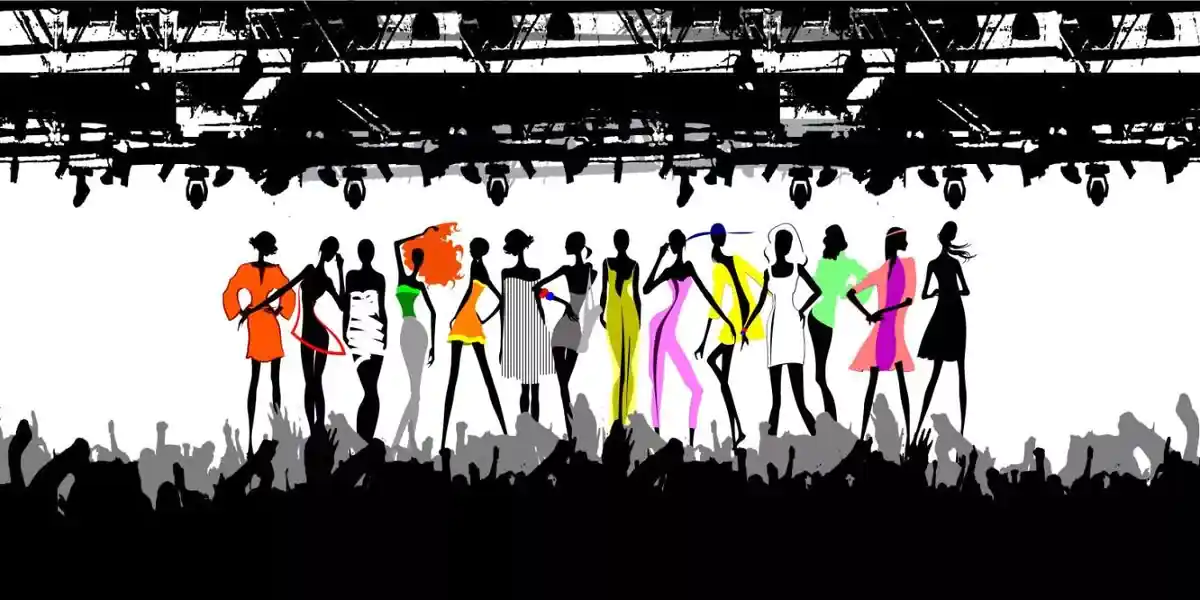
Communication Design: Looking Beyond a Graphic Design Course
In the first of our series of interactions with you, the aspiring Communication Design student, I think it is important…

Photography for Beginners: The Bigger Picture of Taking a Picture
The digital age has allowed photography to boom like never before. It’s a massive, commercial industry which is growing explosively…
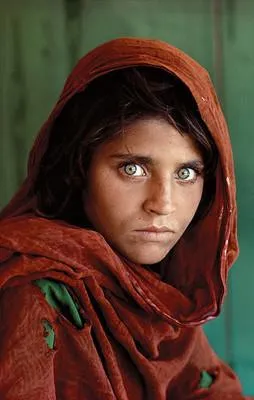
enquiry form

25,000+ students realised their study abroad dream with us. Take the first step today
Meet top uk universities from the comfort of your home, here’s your new year gift, one app for all your, study abroad needs, start your journey, track your progress, grow with the community and so much more.

Verification Code
An OTP has been sent to your registered mobile no. Please verify

Thanks for your comment !
Our team will review it before it's shown to our readers.

- School Education /
✍️Essay on Fashion: Samples in 100, 150, 200 Words

- Updated on
- Oct 26, 2023
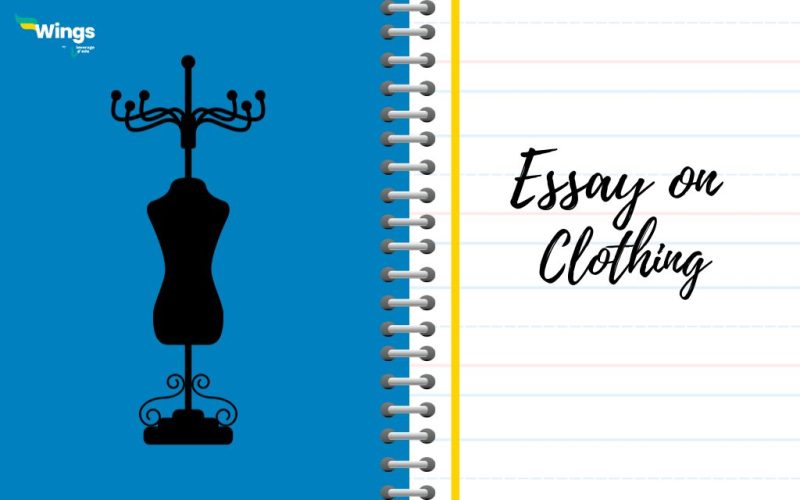
Fashion is a non-verbal form of expression that describes a person’s character and sense of style. Before, it was just the realm of the famous, and aristocracy. However, the average person, particularly young people, can now afford to wear fashionable clothing. Additionally, fashion started out as a trend but through time came to be accepted as a certain way of living, whether it be in terms of behaviour, apparel, or lifestyle. Speaking of which, in this blog, we will talk about how fashion has evolved over time in our sample essays. Let’s dive in.
Table of Contents
- 1 History of Fashion
- 2 Essay on Fashion in 100 Words
- 3 Essay on Fashion in 150 words
- 4 Essay on Fashion in 200 Words
History of Fashion
Not just fashion designers but other people are curious to know the history of fashion. According to historians, Charles Frederick Worth was the first fashion designer. When clothing was still created by unidentified seamstresses, he founded the House of Worth, a fashion design studio, in Paris. Contemporary fashion is characterized by a blend of diverse influences, styles, and trends from various cultures and time periods. Fashion has become more accessible and inclusive, with designers experimenting with sustainability, technology, and innovative materials to create unique and socially conscious clothing
Also Read: Essay on Nature: In 100 Words, 200 Words, 300 Words
Essay on Fashion in 100 Words
Fashion encompasses clothing, accessories, and even behaviours, reflecting culture and individuality. Fashion evolves continuously, driven by designers, influencers, and changing norms. It has the power to convey identity, status, and creativity. Whether classic or avant-garde, fashion allows individuals to make statements and connect with others through a shared aesthetic.
It mirrors the zeitgeist, responding to economic, environmental, and social shifts. In a world of fast fashion and sustainability concerns, redefining our approach to style becomes essential. Fashion’s allure lies in its ability to blend art, identity, and innovation, shaping our visual language.
Essay on Fashion in 150 words
Fashion is a form of self-expression that plays a significant role in our lives. It includes clothing, accessories, and personal style, reflecting one’s personality and cultural influences. Fashion trends constantly evolve, influenced by designers, celebrities, and societal shifts.
The 1920s saw the rise of flapper dresses and a rebellious spirit, while the 1960s embraced mini skirts and the counterculture movement. In recent years, sustainability and ethical fashion have gained prominence, emphasizing the need for eco-friendly choices and responsible consumption.
Fashion is more than just aesthetics; it is an industry that impacts economies, employing millions worldwide. It serves as a medium for creative expression, and social movements often utilize fashion to convey powerful messages.
In conclusion, fashion is a versatile cultural force that goes beyond mere clothing. It reflects our society’s values and artistic expression.
Also Read: Essay on My Favourite Book: Samples in 100, 200, 300 Words
Essay on Fashion in 200 Words
Fashion is an evolving form of self-expression that has penetrated our daily lives, bringing more clothing choices to become a reflection of culture, identity, and individuality.
Fashion, throughout history, has mirrored societal norms and values. It has been a canvas for rebellion or conformity. Whether it’s the flapper dresses of the 1920s, the bell-bottoms of the 1970s, or the minimalist styles of the 21st century, fashion has been a powerful communicator.
Moreover, the fashion industry is an economic powerhouse, shaping global trends and contributing significantly to various economies. It influences not only what we wear but also the jobs we create and the environmental impact we have.
Fashion’s role in personal identity is undeniable. People use clothing to express their personalities, tastes, and beliefs. It empowers individuals to feel confident and unique.
However, the fast fashion industry has been criticized for its environmental footprint and labor practices. However, over time calls for sustainable, ethical fashion have gained momentum, emphasizing the need for responsible consumption.
In conclusion, fashion is more than just attire; it’s a reflection of our culture, an economic force, a personal identifier, and a global conversation. As we navigate the complex world of fashion, it’s essential to strike a balance between personal expression, industry responsibility, and environmental sustainability.
Related Articles
The development of clothing, footwear, accessories, cosmetics, and jewellery with varied cultural aesthetics and their mixing and matching to create outfits that represent distinct styles of dressing are referred to as fashion.
Fashion is a form of expression that is not restricted to clothing, this term often refers to designer clothing and accessories.
Dressing up shows how we look at someone. They help create an idea of what we think of someone’s personality. Wearing makes someone comfortable and people will respect your individuality. Therefore, this is an important part of fashion.
For more information on such interesting topics, visit our essay-writing page and follow Leverage Edu !
Malvika Chawla
Malvika is a content writer cum news freak who comes with a strong background in Journalism and has worked with renowned news websites such as News 9 and The Financial Express to name a few. When not writing, she can be found bringing life to the canvasses by painting on them.
Leave a Reply Cancel reply
Save my name, email, and website in this browser for the next time I comment.
Contact no. *

Connect With Us

25,000+ students realised their study abroad dream with us. Take the first step today.

Resend OTP in

Need help with?
Study abroad.
UK, Canada, US & More
IELTS, GRE, GMAT & More
Scholarship, Loans & Forex
Country Preference
New Zealand
Which English test are you planning to take?
Which academic test are you planning to take.
Not Sure yet
When are you planning to take the exam?
Already booked my exam slot
Within 2 Months
Want to learn about the test
Which Degree do you wish to pursue?
When do you want to start studying abroad.
January 2024
September 2024
What is your budget to study abroad?

How would you describe this article ?
Please rate this article
We would like to hear more.
Have something on your mind?

Make your study abroad dream a reality in January 2022 with
India's Biggest Virtual University Fair

Essex Direct Admission Day
Why attend .

Don't Miss Out

- Market Intelligence
- Advertisement
- Digital Advertisement
- Print Advertisement
- Custom Market Research
- Syndicated Reports
- ALCHEMPro NEW
- Media Booster
- Magazine Subscription
- Premium Membership
- Corporate Membership
- Emerge - Fashion Accelerator
- Stream Event
- Trade Fairs
- Technical Textiles
- Web Stories
The Role of Fashion in Self-Expression and Identity

The study of how our choices in dress affect how we see and assess one another is known as fashion psychology. The phrase ‘fashion psychology’ is rather deceptive, as the area examines much beyond how clothes affect a person. Marketers who need to anticipate how long a product will be in style as well as understand the characteristics that increase the likelihood that a set of customers would accept it, need to pay close attention to fashion psychology. Therefore, a focus of fashion psychology is also on how acceptance evolves through time.
When we first encounter someone, we make an instant judgement about them or form an opinion about them. That is, people are evaluated based on their personalities, appearance, and attire. A report by Fashion and Law journal states that a person’s clothing is an abstract portrayal of who they are from within. 1 With fashion serving as a means of self-expression and connection to the outside world, it says a lot about who we are as people. There are so many psychological factors, including cultural norms, individual preferences, and social expectations, at play, which affect our fashion choices without our knowledge.
When people are sad or down, they often go shopping to lift their spirits. However, emotions may be good or negative when it comes to fashion. We feel uneasy and lose confidence when we are unsure about what to wear or how to wear it. As a result, we start to worry about what people may think, which negatively impacts our mood.
Similarly, since the beginning of time, fashion statements were used to establish class, identity, and beliefs. Clothing was intimately associated with social status and display of wealth in earlier civilisations. A person’s choice of clothing might serve to express their political or religious affiliation. Moreover, a lot of stress was put on having a beautiful appearance as a symbol of status and authority. With the development of mass production and the subsequent rise in the availability of appealing apparel, the 20th century witnessed an explosion in fashion. It became easier for the consumers to experiment with various appearances, allowing them to develop distinctive looks that made them stand out from the crowd.
Furthermore, fashion enables individuals to express their creativity and explore new aspects of their personality. Experimenting with clothes may reveal new facets of a person’s personality that they may not have even been aware of previously, from cutting edge streetwear trends to traditional vintage outfits.
Additionally, it is important to prioritise feeling confident in one’s appearance rather than trying to conform to whatever society deems to be ‘trendy’ at any one time. No matter what styles of clothing and accessories are in style, embracing your own sense of originality should always be viewed as a good trait that fosters creativity and self-confidence in a person.
Fashion choices reflect development, shifting ideals, and individuality. Young people want their clothing to express their character, qualities and ideals. They desire the freedom to express themselves via their choices in clothing. As young people progress through the phases of psychological development, fashion is crucial because it helps them build a sense of identity and a mechanism for obtaining social approval.
According to an article published by Michael Solomon, the origin and spread of fashion may be viewed from a variety of angles including psychological and sociological. 2
Psychological Models of Fashion
What drives us to follow trends can be explained by a variety of psychological variables. Conformity, a need for variation, the drive to express one’s originality, and sexual attraction are a few of these. For instance, many customers appear to have a demand for uniqueness: They want to stand out, but not too much. Because of this, individuals may follow the fundamental principles of a trend while improvising to express themselves uniquely within these overarching principles.
The ‘dress for success’ phenomenon serves as an example of the pervasive notion that how one looks affects how they are treated. One study required participants to wear a lab coat, which people tend to identify with careful and focused work. They discovered that participants who wore the lab coat performed better on activities that needed careful attention. However, the benefits vanished when responders were informed that the garment was actually a painter’s coat rather than a doctor’s lab coat. In other words, the respondents made changes to their behaviour based on how they perceived the symbolic significance of the apparel. The saying “clothes make the man” perfectly captures this process.
Sociological Models of Fashion
It is crucial to remember that fashion processes have an impact on all forms of cultural phenomena, including music, art, architecture, and even science, even though we frequently link fashion with clothes. According to the trickle-down hypothesis, when people try to move up the social mobility ladder, inferior groups first adopt the status symbols of the groups above them. Thus, dominant styles start with the upper classes and spread to the lower classes.
Ending Note
Fashion plays a significant role in our lives, and it is more than just a way to cover our bodies. It is a form of self-expression and a way to communicate our identity to the world. The psychology of fashion has shown that our clothing choices are influenced by various factors, including our cultural background, social status, and personal preferences. Understanding these influences can help us make more conscious fashion choices that reflect our true selves and help us feel confident and comfortable in our own skin. So, whether you are a fashion enthusiast or not, it is worth taking a moment to think about the psychology behind your fashion choices and how they contribute to your overall sense of self.
- https://fashionlawjournal.com/the-psychology-of-fashion/
- https://www.michaelsolomon.com/fashion-psychology/
- Custom Clothing
- Favourite
- Disclaimer
- Comments
Responsibility:
Fibre2fashion.com does not warrant or assume any legal liability or responsibility for the excellence, accurateness, completeness, legitimacy, reliability or value of any information, product or service represented on Fibre2fashion.com. The information provided on this website is for educational or information purposes only. Anyone using the information on Fibre2fashion.com, does so at his or her own risk, and by using such information agrees to indemnify Fibre2fashion.com, and its content contributors from any and all responsibility, loss, damage, costs and expenses (including legal fees and expenses), resulting from such use.
No Endorsement:
Fibre2fashion.com does not endorse or recommend any article on this site or any product, service or information found within said articles. The views and opinions of the authors who have submitted articles to Fibre2fashion.com belong to them alone and do not reflect the views of Fibre2fashion.com.
Submit your Request
If you wish to reuse this content on web, print or any other form, please seek for an official permission by writing to us on [email protected]
- Textile News
- Apparel News
- Fashion News
- Retail News
- Technology News
- E-Commerce News
- Sustainability
- Technical Textile News
- Partner News
- Submit your press release
- Analyst Corner
- Editor's Pick
- Advertorials
- Contributors' Profiles
- Become a Contributor - Submit Your Article
- Industry Speak
- Fashion Talk
- Management Dialogue
- TexPro - Take a free demo
- Market Watch Report
- Cotton Report - Download Sample Report
- Customised Report
- Fibre2Fashion Magazine
- Advertise in Magazine
- Browse Archives
- Sustainability Compendium
- Machinery Compendium
- Nonwoven Compendium
Moments Log
Blogging every moment of your life
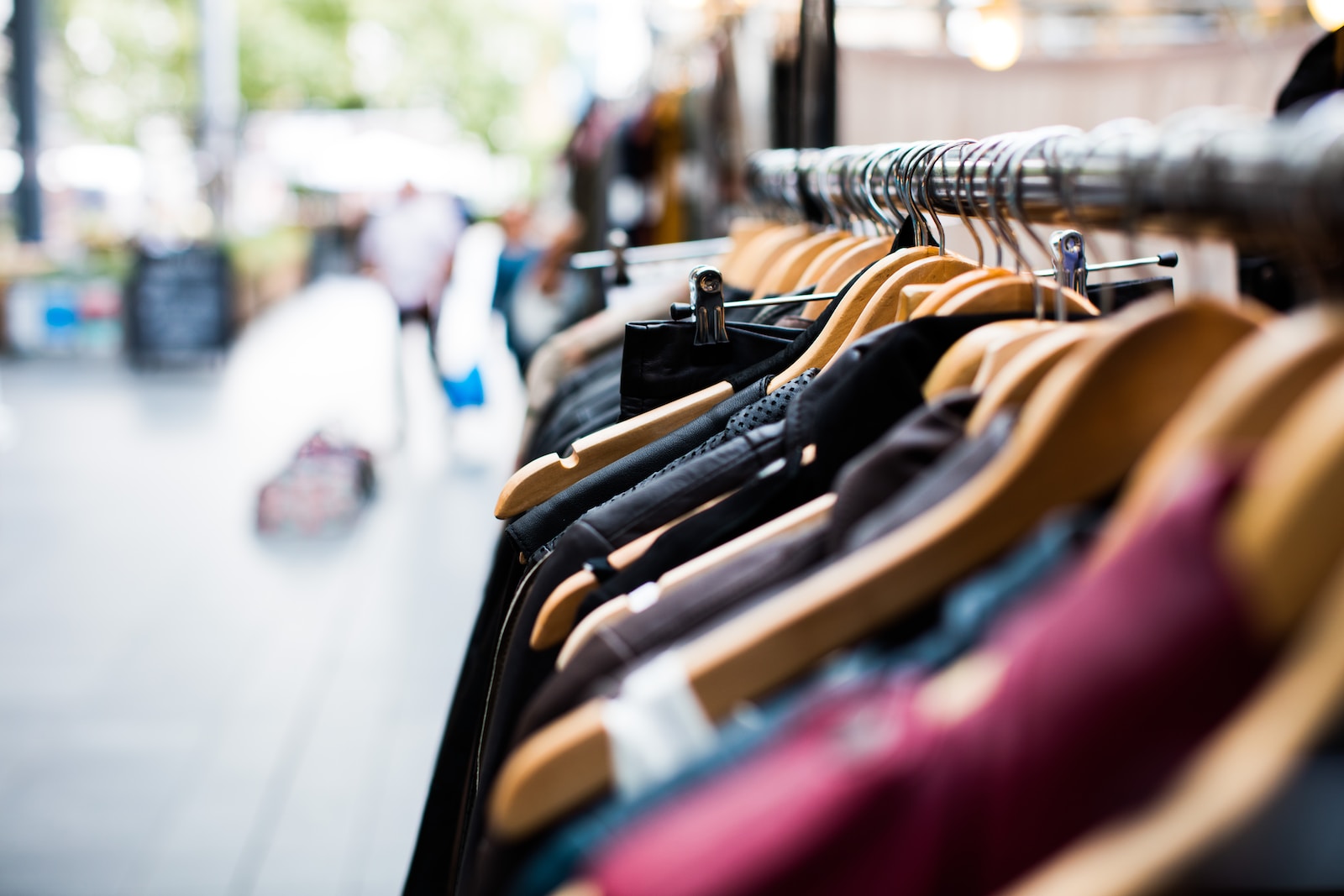
The Language of Fashion: How Clothing Communicates Cultural Identity
The language of fashion : how clothing communicates cultural identity.
Fashion has always been a powerful tool for self-expression and a reflection of cultural identity. From the traditional clothing of indigenous communities to the avant-garde designs of modern fashion houses, clothing speaks volumes about who we are and where we come from.
Introduction: The Power of Clothing in Communication
Clothing is a universal language that transcends borders, cultures, and languages. It is a form of nonverbal communication that can convey a wide range of emotions, attitudes, and beliefs. Clothing can express our personality, our social status, our gender identity, and our cultural heritage. It can also serve as a form of protest, a statement of solidarity, or a symbol of resistance.

Fashion as a Reflection of Cultural Identity
Fashion is intimately connected to cultural identity. It reflects the values, beliefs, and traditions of a particular community or society. Traditional clothing, for example, is often passed down from generation to generation and is an important part of cultural heritage. It can also serve as a way to preserve and celebrate a community's unique identity.
Fashion designers often draw inspiration from their cultural heritage, incorporating traditional motifs, fabrics, and techniques into their designs. This not only helps to preserve cultural traditions but also promotes cultural exchange and understanding.

Clothing as a Tool for Social and Political Expression
Clothing can also be a powerful tool for social and political expression. Throughout history, people have used clothing to express their political beliefs, protest against injustice, and show solidarity with marginalized communities.
In the 1960s, for example, the civil rights movement in the United States saw activists wearing dashikis and other African-inspired clothing as a way to show pride in their heritage and protest against racial discrimination. Similarly, the punk rock movement in the 1970s saw young people wearing ripped clothing, safety pins, and other DIY fashion as a way to rebel against mainstream culture and express their dissatisfaction with the status quo.

The Future of Fashion and Its Role in Cultural Exchange
As the world becomes more connected, fashion is playing an increasingly important role in cultural exchange. Fashion designers are drawing inspiration from a wide range of cultures and traditions, creating a new fusion of styles that reflects the global nature of our society.
At the same time, fashion is also becoming more inclusive and diverse, with designers and brands embracing models of all shapes, sizes, and backgrounds. This is helping to break down cultural barriers and promote greater understanding and acceptance of different cultures.

In conclusion, clothing is much more than just a way to cover our bodies. It is a powerful tool for self-expression, cultural preservation, and social and political change. As fashion continues to evolve, it will play an increasingly important role in promoting cultural exchange and understanding, and in shaping the way we express ourselves and our identities.
Share this:

Learn More Psychology
- Behavioral Psychology
Fashion Psychology: What clothes say about you
The psychology driving our clothing choices and how fashion affects your dating prospects..
Permalink Print |
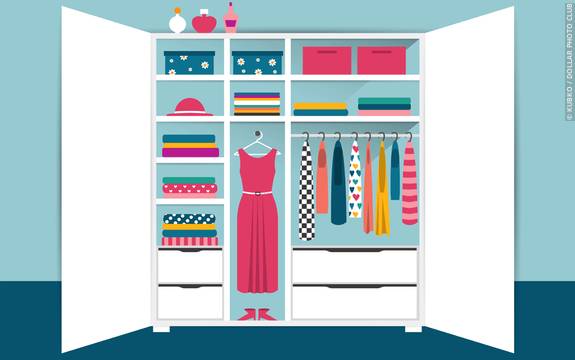
You needn't be an avid fashionista, nor a London Fashion Week regular, to be aware of how important our dress sense is to our reputations in the 21st Century. The clothes we wear send powerful signals to our peers and strangers, projecting the self image of us that we want to display.
Yet, how many of us truly understand the psychology of how people in the street or office interpret our wardrobe choices , and how this impression might differ to the one that we believe we're conveying to them?
An array of psychological surveys have revealed the true impact of clothing choices on the way in which we perceive and judge each other, with experiments showing some surprising results. They even reveal how subtle varieties in dress sense can affect our ability to attract a partner whilst we are dating.
Defying stereotypes
Against the gender stereotype of females being more fashion-aware and conscious of others' clothes and makeup efforts than males, studies have also lifted the lid on men's insecurities with regards to clothes.
Contrary to commonly held beliefs, men have been shown to be often more self-conscious than females with regards to their personal dress sense and the way in which they are viewed in public ( Solomon and Schopler, 1982 ). 1
Therefore, we need to understand the significance of clothing choices regardless of our gender. Whether you are male or female, your fashion choices can affect both your self image , the impression that you convey to others and in turn, the way in which people behave towards you. They can influence everything from the outcome of a sports match ( Hill and Barton, 2005 ) to an interviewer's impression of your ability to perform effectively in a job position ( Forsythe, 2006 ). 2 3
In this article, we look at the effect that our fashion choices today can have on our lives, and how our unconscious clothing choices are interpreted by those around us.
Why clothes matter: what your wardrobe says about you
Clothes have not always been as influential a 'tell' of our personalities as they are today. Only as a result of technical advancements over centuries have fashion choices become significant.
Where in early civilizations, the key purpose of clothing was to keep us warm and relatively dry, today, central heating warms our homes, reducing our dependence on clothes alone to help us to survive. Clothes have developed from a practical asset to a social marker: they affect the way we see ourselves. They help us to be seen in the light that we wish to be, and also exude our personalities and social status.
In many societies, dress sense embodies personal wealth and taste. For example, Economist George Taylor demonstrated this most vividly with the Hemline Index (Taylor, 1926). 4 Taylor noted that as a country enters recession and adopts austere spending habits, women often show a preference towards longer dresses, whilst during times of prosperity, the opposite result can be seen - hemlines often become shorter.
A second key influence on our dress sense is a result of millions of years of development as a species. As with many animals, the concept of mate selection in evolutionary psychology suggests that our behavior is determined by our efforts to find a mate and to reproduce.

According to signalling theory, a male peacock will display his vibrant fan of covert feathers in a ritual to attract a female with whom to mate. Such rituals vary from species to species, but in humans, our ability to create and wear clothes gives us a equivalent advantage in being able to distinguish ourselves from a crowd and demonstrate our individuality in an effort to find a mate. Conversely, too, we might use clothing to merge into a crowd and hide our individuality by dressing in a uniform.
Dressing to Impress?
Aside from the adage of "dressing to impress" what do we know about the psychology of clothing choices in relation to dating?
Firstly, let's consider the idea of how we seek to 'impress' potential partners. A study by Joseph Benz at the University of Nebraska surveyed more than 90 men and women with regards to the way in which they deceive potential partners whilst on dates. The researchers found that both genders tend to use deception when dating but for different purposes.
Males were found to try to impress their dates by emphasizing the security that they could offer the partner - for example, by exaggerating their financial position or by trying to demonstrate a preparedness to commit. Women, however, were deceptive with regards to their body image , exaggerating physical features in an effort to appear more attractive to their date ( Benz et al, 2005 ). 5
In both cases, clothing may play a part in this dating ritual of deception.
Another factor in our clothing choices is the way in which males and females perceive and interpret different colors .
In one experiment, researchers photographed people in different colored clothes and then asked participants to rate the attractiveness of people in the resulting photos. They found that the color of clothing affects the way in which men rate both males' and females' attractiveness, and how women rate men's attractiveness. Interestingly however, clothing color did not influence women's judgement of other females ( Roberts et al, 2000 ). 6
This brings us to the question: which colors are viewed as attractive?
Roberts and his fellow researchers found that red clothes would tend to lead participants to rate subjects more favorably in terms of attractiveness compared to when they wore clothes of other colors.
This result might explain the findings of a study which found that, when waitresses wore different colored t-shirts whilst serving in a restaurant, men would tend to leave higher tips for those wearing red tops than those with t-shirts of other colors. However, shirt color had no effect on the tips left by female customers ( Guéguen and Jacob, 2010 ). 7
Learn more about the psychology of color here
Of course, the color of garments is far from the only factor used in judging a person based on clothing.
Timothy Brown and his fellow researchers of the Department of Psychology at Old Dominion University looked at the effect of clothing on college students' judgement of both people's attractiveness and masculinity or femininity.
Brown found that in both genders, posture and the way in which people moved influenced perceptions of their masculinity or femininity, which was intrinsically linked to their judgement of their attractiveness.
Specifically in males, tight-fitting clothes as opposed helped lead to perceptions of increased masculinity over those who wore baggy garments ( Brown et al, 1986 ). 8
Naturally, many of the findings from research into the psychology of fashion and clothing choices are subject to the cultural values of the society in which a person lives. Cultural differences in the interpretation of color, for example, mean that red may be perceived to have different qualities to those valued by participants in Guéguen and Jacob's waitress experiment, depending on the country a restaurant is situated in.
We should also note that the superficiality of clothing choices are rarely the sole determinant of how people are perceived: Brown's study into clothing and attractiveness demonstrated the influence of body language in addition to clothing choices. And for those of us with limited fashion sense, as the English writer William Hazlitt cautioned, "Those who make their dress a principal part of themselves, will, in general, become of no more value than their dress".
- Solomon, M.R. and Schopler, J. (1982). Self-Consciousness and Clothing. Personality and Social Psychology Bulletin . 8 (3). 508-514.
- Hill, R.A. and Barton, R.A. (2005). Psychology: red enhances human performance in contests. Nature . 435 (7040). 293.
- Forsythe, S.M. (1990). Effect of Applicant's Clothing on Interviews' Decision to Hire. Journal of Applied Psychology . 20 (19). 1579-1595.
- Taylor, G. (1926).
- Benz, J.J., Anderson, M.K., Miller, R.L. (2005). Attributions of Deception in Dating Situations. The Psychological Record . 55 . 305-314.
- Roberts, S.C., Owen, R.C. and Havlicek, J. (2010). Distinguishing between perceiver and wearer effects in clothing color-associated attributions. Evolutionary Psychology . 8 (3). 350-364.
- Guéguen, N and Jacob, C. (2010). Clothing Color and Tipping. Journal of Hospitality and Tourism . 38 (2). 275-280.
- Brown, T.A., Cash, T.F. and Noles, S.W. (1986). Perceptions of Physical Attractiveness Among College Students: Selected Determinants and Methodological Matters. Journal of Social Psychology . 126 (3). 305-316.

Which Archetype Are You?

Are You Angry?

Windows to the Soul

Are You Stressed?

Attachment & Relationships

Memory Like A Goldfish?

31 Defense Mechanisms

Slave To Your Role?

Are You Fixated?

Interpret Your Dreams


How to Read Body Language

How to Beat Stress and Succeed in Exams

More on Behavioral Psychology
Pavlov's Dogs
How Pavlov's experiments with dogs demonstrated that our behavior can be...
Pavlov's Dogs And Classical Conditioning
Shock Therapy
Aversion therapy uses the principle that new behavior can be 'learnt' in order...
Immerse To Overcome?
If you jumped out of a plane, would you overcome your fear of heights?
Imprinting: Why First Impressions Matter
How first impressions from birth influence our relationship choices later in...
Bats & Goodwill
Why do we help other people? When Darwin introduced his theory of natural...
Sign Up for Unlimited Access

- Psychology approaches, theories and studies explained
- Body Language Reading Guide
- How to Interpret Your Dreams Guide
- Self Hypnosis Downloads
- Plus More Member Benefits
You May Also Like...
Psychology of color, persuasion with ingratiation, making conversation, master body language, nap for performance, brainwashed, dark sense of humor linked to intelligence, why do we dream, psychology guides.

Learn Body Language Reading

How To Interpret Your Dreams

Overcome Your Fears and Phobias
Psychology topics, learn psychology.

- Access 2,200+ insightful pages of psychology explanations & theories
- Insights into the way we think and behave
- Body Language & Dream Interpretation guides
- Self hypnosis MP3 downloads and more
- Behavioral Approach
- Eye Reading
- Stress Test
- Cognitive Approach
- Fight-or-Flight Response
- Neuroticism Test
© 2024 Psychologist World. Home About Contact Us Terms of Use Privacy & Cookies Hypnosis Scripts Sign Up
Need help submitting your writing to literary journals or book publishers/literary agents? Click here! →

How Clothes And Fashion Can Define A Character | Writer’s Relief
by Writer's Relief Staff | Interesting News for Writers | 0 comments
Review Board is now open! Submit your Short Prose, Poetry, and Book today!
Deadline: thursday, april 18th.

Dialogue and action help move your plot forward, but there’s another element that many writers overlook: clothes can define a character and help with the story’s trajectory. What the characters are wearing can tell us volumes about their means and motives. In this article Writer’s Relief found on LitHub.com , we learned writers should think like costume designers. The costume designer for a movie uses the color, texture, and fit of a garment to provide details about a character’s self-image, social position, and relationships to others in the story. Writers can also use clothes and fashion to define a character. And having the right facts about the clothing your characters are wearing is especially important when writing historical fiction!
Click here to read more about how to think like a costume designer when writing.

Submit a Comment Cancel reply
Your email address will not be published. Required fields are marked *
Submit Comment

See ALL the services we offer, from FREE to Full Service!
Click here for a Writer’s Relief Full Service Overview

Services Catalog

Free Publishing Leads and Tips!
- Name * First Name
- Email * Enter Email Confirm Email
- Phone This field is for validation purposes and should be left unchanged.

Featured Articles

Featured Video
- Facebook 121k Followers
- Twitter 113.9k Followers
- YouTube 5.1k Followers
- Instagram 5.5k Followers
- LinkedIn 146.2k Followers
- Pinterest 33.5k Followers
Pin It on Pinterest
Essay: Why Fashion is Important
The Fashionisto
Published October 18, 2017
Updated May 4, 2024
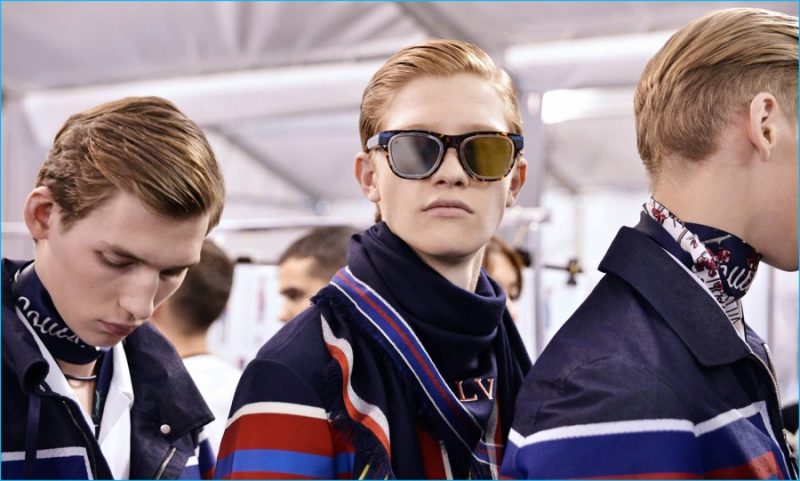
Fashion is one of the most critical industries in our world today. Style has become one of the primary ways in which people express their personality and distinguish themselves from those around them. With every New Year which comes and goes, new fashions arrive on the scene, and they all endeavor to be more colorful and fashionable than those which saw last year. There’s inspiration everywhere, from online retailers like Roden Gray to printed magazines. The desire to express one was present throughout human history.
People of all ages are addicted to new trends in fashion. There is a tremendous amount of competition within the industry and also among consumers. The style is also different among different cultures and nationalities, which is why it’s so exciting when one travels to various parts of the planet to observe firsthand how people dress in those countries. Our clothes have become more than merely a way to cover our nakedness. Instead, it has also become one of the primary ways in which people express themselves.
Garments which may fit one person may not necessarily be equally suitable for someone else. And even if those clothes are fantastic designer efforts, it does not mean everyone would be equally comfortable wearing them. Different people will need different styles and designs, which will be an expression of their uniqueness and personality before they will not be comfortable wearing that specific fashion design. Human beings are complicated creatures; everyone has different desires, dreams, and objectives that they deem essential to success in their life. Fashion trends are a critical aspect of that success.
There is a lot of discrimination among human beings and also a lot of criticism. People will do everything possible to avoid such criticism. Peer pressure continues to affect people throughout their lives, and it is a powerful motivator when it comes to crucial fashion decisions. It is also true that fashion design has reached a very sophisticated level, and therefore some of the most popular models can be very costly.
It has the result that such fashion may only be accessible to affluent people. It can make it very difficult for people of average income to compete in fashion designs. Fortunately, there has been a lot of progress by fashion designers to cater to middle-income consumers. It is why there are a lot of fashion designs available, which can make it possible for less fortunate people to own still fashion designs that will be of very high quality and attractive.
There are fashion items for every season and every occasion, making it possible for people to express themselves differently depending on the specific season or time of the year. Looking at all the consumer needs that have emerged in modern times, it becomes easy to see why fashion design has become such a specialized industry.
Another aspect that deserves contemplation is the fact that there is a measure of similarity in those fashion trends which aim at the low-income person. It is going a long way in avoiding discrimination or unnecessary competition because there is a lot of similarity in the designs which aim at this consumer market. Therefore, less affluent people can avoid unwarranted discrimination and criticism because, they are dressed very similarly in many ways to their friends, colleagues, or family members.
Care should be taken to avoid fashion designs of poor quality, especially in cases where failed fashion experiments are nevertheless mass-produced and then dumped on the low-income consumer. On the other hand, some poor people cannot afford anything better, leaving her with no choice but to purchase low-quality products.
Nevertheless, an eye for detail can be a blessing because this can help a person who may only have access to low-quality fashion items to mix and match those things very efficiently so that the overall result is nonetheless beautiful. There is some truth to the statement that it’s not what you wear but how you wear it, which is the most critical issue.
Unfortunately, many people never seem to learn how to combine different fashion items correctly and adequately. Knowing which colors go together is a rare gift that some people never master. Therefore, even affluent people with access to very costly fashion items often fail to do those things justice because of a lack of understanding regarding color matching.
Many people seem to think tight clothing is more attractive than a loose-fitting dress, and then they make fools of themselves by wearing unnecessarily close-fitting clothes. It is why it is essential to have at least a basic understanding of choosing your fashion items and mixing and matching those things for the best results. Access to the most expensive fashion trends on the market is undoubtedly a benefit. Still, it’s even more important to have a basic sense of how to maximize how the wearer will display those clothes and other articles.
Clothes are also known to impact people’s moods substantially; likewise, some colors are more effective than others in putting people in a better place as far as their mindset and emotions are concerned. Every person should do at least an introductory modeling course to understand how to make the best of their free clothes and accessories. Like we said earlier, it is not so much what you are wearing but rather how you are wearing it, which will ultimately provide proof of your competence as far as fashion and personal appearance is concerned.
Recent Updates

Abercrombie & Fitch Suits Make a Sartorial Splash for Summer

John Varvatos is Earthy Chic for Pre-Fall 2024 Collection

Zara Edition Achieves Linen Perfection for Spring 2024

Chris Hemsworth Style Radar: Furiosa Press to 2024 Met Gala

AMIRI Unveils Core Collection: Celebrating Fundamental Style

Stray Kids Shine in Tommy Hilfiger at 2024 Met Gala
Essay on Fashion for Students and Children
500+ words essay on fashion.
Fashion refers to anything that becomes a rage among the masses. Fashion is a popular aesthetic expression. Most Noteworthy, it is something that is in vogue. Fashion appears in clothing, footwear, accessories, makeup, hairstyles, lifestyle, and body proportions. Furthermore, Fashion is an industry-supported expression. In the contemporary world, people take fashion very seriously. Fashion is something that has permeated every aspect of human culture.

History of Fashion
The origin of Fashion is from the year 1826. Probably everyone believes Charles Frederick to be the first fashion designer of the world. He also established the first Fashion house in Paris. Consequently, he began the tradition of Fashion houses. Furthermore, he gave advice to customers on what clothing would suit them. He was prominent form 1826 to 1895.
During this period, many design houses hired artists. Furthermore, the job of these artists was to develop innovative designs for garments. The clients would examine many different patterns. Then they would pick the one they like. Consequently, a tradition began of presenting patterns to customers and then stitching them.
At the beginning of the 20th century, new developments in Fashion took place. These developments certainly began in Paris first. Then they spread in other parts of the world. Consequently, new designs first came into existence in France. From Paris, they went to other parts of the world. Hence, Paris became the Fashion capital of the world. Also, Fashion in this era was ‘haute couture’. This Fashion design was exclusively for individuals.
In the mid-20th century, a change took place. Now Fashion garments underwent mass production. There was a significant increase in the rate of production of Fashion garments. As a result, more and more people became involved with Fashion garments. By the end of the 20th century, a sense of Fashion awareness was very strong. Now people began to choose clothes based on their own style preference. Hence, people began to create their own trends instead of relying on existing trends.
Get the huge list of more than 500 Essay Topics and Ideas
Fashion Trend
Political influences certainly play a major role in influencing Fashion. Many politicians become fashion symbols. Notable examples are First Lady Jacqueline Kennedy and Princess Diana. Also, political revolutions make a huge impact on the Fashion trend. For example, in 1960’s America, liberal clothing styles became popular among the younger generation. This was due to the Liberal revolution.
Another significant factor which influences Fashion trend is technology. There certainly has been a rapid growth of technology in the Fashion industry. For example, wearable technology has become a popular Fashion trend. Furthermore, 3D printing technology and the internet have also made an impact on Fashion.
Social influences are probably the strongest influences on the Fashion trend. Many music stars strongly influence Fashion choice. For example, wearing hoodies became famous due to rap musicians. Furthermore, movie and television actors create a big impact on Fashion. Many youngsters love to emulate the Fashion sense of their favourite celebrity.
To sum it up, Fashion certainly has become a part and parcel of human life. It certainly is a force that is here to stay. Most noteworthy, Fashion has immersed every place on Earth.
Customize your course in 30 seconds
Which class are you in.

- Travelling Essay
- Picnic Essay
- Our Country Essay
- My Parents Essay
- Essay on Favourite Personality
- Essay on Memorable Day of My Life
- Essay on Knowledge is Power
- Essay on Gurpurab
- Essay on My Favourite Season
- Essay on Types of Sports
Leave a Reply Cancel reply
Your email address will not be published. Required fields are marked *
Download the App

- Get the Spectrum App for your phone!
- Have You Downloaded the Spectrum App for Your Phone Yet?

The Spectrum
Fashion: does it define us.
Sabrina Guilbeault and Keegan Espinola | March 12, 2014
Fashion. It’s how we express ourselves and it’s our way to show the world who we are. People can dress up, dress down, wear jeans, dresses, or any type of clothing that allows them to share their individuality. It’s obvious what things are in and out of style, but the question is: does fashion define who we are as people?
Today’s society is in love with brand names and whether we acknowledge it or not, we let fashion influence us, even at DHS. The North Face, Uggs, Patagonia, Steve Madden, Hunter Boots, and Abercrombie & Fitch are just some of the brands the average DHS student may see when walking down the hallway.
“I try not to let clothes define people,” said history teacher Laurie Chiarito, “but occasionally it does.” We all have beautiful and unique personalities and there is no denying that the outfits and styles we wear reflects these personalities.
“I think fashion defines a person because it can mainly express an individual’s personality or attitude,” said junior Jordan Pinto. People often wear things based on who they are. For example, a student athlete might wear more athletic gear than a student who’s not interested in sports.
“You don’t have to choose fashion as a way to express yourself,” said freshman Colleen O’Boyle. She explained she loves her four pairs of Converse, but that shouldn’t define her as a person.
However, clothing and accessories can stereotype a person. For example, we both have black rimmed glasses, and we feel much more intelligent when we wear them. Physically putting on glasses doesn’t make us any smarter, but it can give off the illusion that we are.
Either way, do our glasses or anything else we wear define us? “It depends if you’re really in depth with fashion,” said sophomore Alice Goodman who said she does not allow fashion to define her. “I’m a multilayered person, like many Americans.”
“Fashion speaks for itself and defines a person without speaking,” said junior Annie Nguyen. “I feel like more people care about [fashion] at DHS though.”
Nguyen, who once attended New Bedford High, explained how the need to wear similar styles is more prevalent here than at NBHS. “It seems like everyone dresses alike and has the same style instead of being original,” she said.
Not only do certain styles “define” us, but at times we let brand names define us well.
When you walk into Macy’s there are obviously better parts of the store than others. As a society we are more drawn to the “better parts” where the products in style are being sold. An anonymous source said that when shopping at Macy’s, she would not look at any other shoe brand besides Sperrys.
“Brand names are a part of the culture we are growing up through,” said sophomore Lucy Schwartz. “It’s hard to buy a purse or shirt without someone else’s initials stamped onto it.”
Some people love brand names because it makes them feel better about themselves when they’re wearing it. That’s why it’s called retail therapy.
Sometimes, though, it’s not the brands that define us, but the confidence we have when we wear certain styles. “As for brand names, I don’t think they are important,” said Pinto. “Whether you’re wearing clothes from Target or Victoria’s Secret, it all depends on how you put an outfit together, and the confidence you have in a put-together outfit.”
It is true that everyone has different styles, and that is made evident through the choices we make in our outfits for school. However, sometimes people define us based on what we wear, which isn’t always a good thing. “If you dress inappropriately you will be judged for it,” said sophomore Owen Tavares.
We realize that fashion shouldn’t define us, but it does. Fashion is an ever growing industry and it gives us the opportunity to share who we are in a multitude of different ways.
“Fashion is important because it shows a level of self expression that is hard to reach nowadays,” said Schwartz. “The popular thing is to blend into the crowd, and fashion helps break that feeling.”
Blog 1: Bluelining: A Burgeoning American Pastime
Celeb Culture: Welcome to the World, Malibu Barbie
Climbing with Connor: Screams of Silence
Rosa’s Guidance #2
Rosa’s Guidance #1
The Lives of DHS Students: Senior Charlie Fairfax
Give Us Your Questions: Introducing Rosa’s Guidance
Twin Flames: Love, lies, and desperation
DHS Winter Guard and Indoor Winds: Diamonds under Pressure
The student news site of Dartmouth High School
Comments (3)
Cancel reply
Your email address will not be published. Required fields are marked *
Munah Rioh • Jul 19, 2020 at 7:51 am
A good piece to read. I normally dress to the occasions so to blend in the crowd or a smarter way to avoid unnecessary attention. As much as I love fashion, I would rather hunt for practical clothes that have multi-functional, both for office and leisure. In that way, I can save my budget. At time, tailoring clothes are my utmost preference as they really fits and satisfying. Thus, anything comfortable would define me.
Alden Smith • Nov 18, 2019 at 2:54 am
Your writing style has been surprised me. Thank you, very great post. It is a very informative article for me. I like to live in fashion and bought my fashionable clothes always from hong kong ace tailor L & K Bespoke tailor and that tailor-made clothes always define me as I want.
MarleneWood • Oct 6, 2019 at 9:07 pm
A very useful article, thank you. I’m busy doing some research on ‘How We Express Ourselves’ for my Year 5 & 6 students. One of our Lines of Inquiry is ‘Fashion as a form of expression’.
I love fashion, follow some trends, but I have over the years developed my own style (even this is forever changing).
Free Home Delivery Over AED 99
Cash On Delivery
Secure Online Card Payment

Item added to your cart
The impact of clothing on a character's personality.
Clothing plays a significant role in our lives and holds even more significance in storytelling. Characters' dress can speak volumes about their personalities, values, and motivations. Let's delve into how clothing affects a character's personality and shapes their narrative journey.
Clothing As A Form Of Self-expression
In the vast world of fashion, various styles and trends allow individuals to express their unique identities. Characters in stories are no exception. From casual wear to elegant ensembles, clothing choices become a visual language through which characters convey their personality traits.
Clothing And First Impressions
The saying "Don't judge a book by its cover" may hold, but clothing plays a pivotal role in shaping our initial judgments. When we encounter a character for the first time, their attire becomes our primary source of information. Stereotypes associated with specific types of clothing can lead us to make assumptions about a character's personality, social status, or profession. However, it is essential to remember that these assumptions can be deceiving, as clothing is just one aspect of a complex personality.
Clothing And Character Development
As characters embark on their narrative journey, their clothing can change significantly, symbolizing their growth or regression. These transformations in their wardrobe mirror internal changes within their personality. For example, shy and introverted characters may start wearing more vibrant and confident outfits as they gain self-assurance. Such changes in clothing serve as visual cues, allowing the audience to witness the character's development over time.
Clothing And Social Dynamics
Clothing also plays a vital role in the social dynamics of a story. Characters use their outfits to fit into or stand out within their social group. Certain clothing choices carry symbolic meanings that can influence how others perceive characters. Whether it's a uniform signifying authority or a subculture's distinctive attire, these choices shape the character's interactions and relationships with others.
Clothing And Emotional Expression
Like facial expressions and body language, clothing can reflect a character's emotional state. The choice of colors, fabrics, and styles can convey specific emotions. For instance, a character dressed in dark, somber clothing might indicate sadness or grief, while vibrant and lively outfits could suggest joy or enthusiasm. Storytellers use clothing to visually depict emotions to deepen the audience's understanding of a character's inner world.
Clothing And Cultural Influences
Clothing choices are not only influenced by personal preferences but also by cultural norms and traditions. Characters from different cultures may dress in specific ways to honor their heritage or conform to societal expectations. By examining characters' clothing within cultural contexts, we gain insight into their background and experiences. Furthermore, characters who defy cultural expectations through their clothing challenge societal norms and contribute to diverse storytelling.
Final Words!!
Clothing is a powerful way to shape a character's personality in a story. Through fashion choices, characters express individuality, make first impressions, undergo transformative journeys, navigate social dynamics, convey emotions, and embody cultural influences. Understanding clothing's impact on character development adds depth to storytelling, fostering visual and emotional connections with the audience. So, pay attention to a character's clothing choices, for they reveal volumes about their identity and story.
Do clothes affect personality?
Yes, clothing can affect a person's personality to some extent. The way we dress can influence our mood, confidence, and how we perceive ourselves. While clothing alone does not determine one's personality, it can shape perceptions and impact self-expression.
How do clothes affect people's behavior?
Clothes can influence people's behavior by altering their self-perception and confidence levels. Specific outfits associated with certain roles or attitudes can evoke corresponding behavioral traits. Additionally, clothes can affect how others perceive and interact with individuals, further impacting their behavior.
How does clothing affect the perception of identity?
Clothing plays a significant role in the perception of identity as it provides visual cues about a person's interests, values, and cultural background. Different styles and choices can signal group affiliations, personal preferences, and social status. Thus, clothing becomes a part of the narrative we present to the world, shaping how others perceive our identity.
Can clothes define a person's character essay?
While clothing can offer insights into a person's character, it alone cannot fully define it. Character is a complex interplay of thoughts, emotions, and actions influenced by various factors beyond clothing. However, clothing can provide clues about an individual's style, taste, and self-presentation, contributing to the overall impression of their character.
What statement do clothes make about a person?
Clothes make a statement about a person's style, preferences, and sometimes their values or beliefs. Depending on the choices, they can convey professionalism, creativity, confidence, or rebellion. Clothes also offer glimpses into cultural or subcultural affiliations, allowing observers to infer a person's lifestyle and interests.
Check Our baby Girls Collection
- Choosing a selection results in a full page refresh.
- Opens in a new window.
Writers in the Storm
A blog about writing.

Are Your Characters Stylin'? Descriptive Fashion Phrases and Terms

photo credit: Zawezome via photopin cc
Describing clothes on characters isn’t nearly as fun writing an action scene. But let’s face it, clothes and their condition say as much about our characters as they do on real people.
Thankfully there are ways to sneak clothing descriptions into a scene without sounding like a fashion magazine.
When ever possible, let clothing and the character’s appearance leak into the scene as a bystander.
Clothing descriptions as a bystander to body language is used a lot.
Example: She sat, smiled and nodded her head. Beneath the table, her damp fists crushed the delicate silk of her evening gown while her kid boots tapped a rapid rhythm. This doesn’t sound like a description of clothing at all and yet the sentence shows the reader what the woman is wearing.
Clothing descriptions as a bystander in an action scene is not the norm. Usually they just slow down the action and are better avoided. UNLESS, the type of clothing is important to the action.
Example: Set up: In my book Love and Fortune the heroine is a distraction while a group of Yankees soldiers surround a band of weary Rebels. Her attire is important to this scene.
The dancer was one with the music … She raised softly curved arms, and a myriad of gold bangles jangled to the rhythm of the mounting beat. Only her green feline eyes were visible above the diaphanous red silk draped loosely about her head and across the lower half of her face. A red peasant blouse slipped down one shoulder, sparking the imaginations of her hushed, gray-uniformed audience. Inky tresses swirled about her undulating hips, hips that invited a man’s caress. … She pivoted abruptly and dashed into the oblivion of the night. Gradey started to rise, but the clicking of rifles being cocked and aimed froze him in place.
Then of course, there’s times when a character arrives on stage, requiring a quick description of their appearance and little more. For those times, the word lists below come in handy. Knowing the exact name of a fashion also saves words and gives the reader an instant picture: Hobble-skirt, mini skirt, peasant blouse, cravat, kid gloves, pea coat, dickey etc. [That list of coats, shirts, skirts, neckwear, hats, shoes etc with their definitions will have to wait for another blog.]
Note: Don’t waste time and words describing an unimportant character who makes only one appearance in the book. Lengthy descriptions imply the character is important to the story.
Below is a list of my fashion terms for women and men. Keep in mind that descriptions of men’s attire should lend themselves to masculinity and durability with a bit of suave thrown into the mix.
By themselves these terms sound like they were taken right out of a fashion magazine. Their beauty is more evident when they're used to trim a wordy description to a concise expression.
Following the men’s list are words and phrases for the “Less Than Presentable,” “Getting Dressed” and “General Synonyms for Clothing.”
General Fashion Terms for Women
…added drama Accented with Accentuated waist Accessorized Aesthetic quality Bold detail Characterized by Charming Clean lines Contrasted Cut generously Daring creation Dazzling sparkles Deep pleats Delicate and lacy Displayed her assets Dominate stripe Eccentric designs Essential elements Exotic Figure fattering Fitted, tailored to fit Flair for the spectacular Flaring Floaty and sheer Flowing Form fitting Frame the face French cut panties Fresh, spring colors Fullness Graceful silhouette Great daring and originality Harmony Harsh tones Height of propriety Highlighted by Hot little off-the-shoulder number Indulge herself with Latest crazeLavished with ruffles/lace etc. Lively print Luxurious silk Made a statement Masterfully rendered in Mode of dress Modified the hemline Motif of *** swirled around the hem Noble simplicity Ornate Ostentatious extravagance Outlined – figure, hem, sleeves Piping detailed the Plunging neckline Portray the rich variety in design Prestige of the label Provocative Prudish length Rare Richly decorated Romantic Rounded collar Sashed at the waist Savvy cut Shabby chic Shapeless Shapely Profile Silky scarves Simplicity Slim lines Soft, supple Spectacular style Stunning Stylistic melange Taste Thin as a Vail of tears Trailing Trends Trimmed Velvety soft Vogue

photo credit: johanoomen via photopin cc
General Fashion Terms for Men
All about comfort Black, a logical choice for a man of noir Convenient Conventional Cushioned inner soles Dapper old gentleman Decadent open collar Durable Expensive leather had some miles on it Geared to a man’s needs Generously cut Hand-crafted Handsomely tailored Heavy duty Indispensable Intricately tooled Lightweight Long range wear Moves from boardroom to elegance ease Nattily unkempt Relaxed fit Sharp and dynamic Sharp front pleats Sporty elegance Step out on the town shoes SturdyTie upstaged his silk shirt Traditional Well groomed
Less Than Presentable
All flash and no dash Beauty blight Bedraggled Blowzy over-done Boots with newspaper stuffed inside to cover the holes in the soles Clothes painted on her Donned grubbies for yard work Dress gone limp in the heat Dressed like an unmade bed Dressed like he’s fleeing a fire/the devil Ensemble clashes Flamboyant colors clashed Foul-smelling socks Gaudy/gauche Gowns cut to see level High water pants, flood pants House dress that looked like a slipcover Huge hat with a hectic array of If she’s class, it doesn’t show on her back It’s called the tacky cut Jeans deliberately torn and frayed Miserably shod feet Misshapen straw hat perched at a jaunty angle Motley hat tilted over one eye Nondescript Off-beat/kinky/Bohemian/hippie/beatnick Old mossback cares nothing for fashion Patched hand-me-downs Poured into her jeans Resembles Rummage Sal Scandalous Shabby as a Shows more of her self than she does style Tattered cast-offs Teen uniform: jeans, scruffy T-shirt, dirty sneakers and no socks Threadbare/napless/frayed/holey/dilapidated/misshapen Vermin ridden/lice fleas/bedbugs Whites that looked gray Wretched condition
Getting Dressed
Array Attire Bundle up Change into Clad Cloaked Costumed herself Doll up Don Dress fit to kiss Dress to the nines Dude up Equip Garb Get beautiful Get glitzed Getting ready Glammed Gown up Groom Gussy up Invest Make ready Outfitted himself Primp Rig up Shroud Slicked up Slip on or into Snaz up Spiff up Spruce up Suit up Swaddle Swath Wrapped in
General Synonyms for Clothing
Array Attire Best bib and tucker Bling Bling – jewelry or sparkle added to clothing Costume Doodads Drapery Duds Ensemble Evening dress, wear Fashion Finery Flashery Floordrobe – clothes left on the floor Frippery Frocks Garb Garments Garmenture Gear Getup Gladrags Grubbies Guadery Guise Habiliment Hand-me-downs Number – as in wearing a sexy number Outfit Rags Raiment Regalia Rigging Suit of clothes Suit up Sunday-go-to-meetin’ Swag – accessories sometimes jewelry or gifts Threads Togs Trapping Trousseau Uniforms Wardrobe Weeds Wraps
About Sharla

When she’s not writing and researching ways to bedevil her book characters, Sharla enjoys collecting authentically costumed dolls from all over the world, traveling (to seek more dolls!), and reading tons of books.
You can find Sharla here at Writers In The Storm, on Twitter at @SharlaWrites or on Facebook .
37 comments on “Are Your Characters Stylin'? Descriptive Fashion Phrases and Terms”
Love these, Sharla. I like how clothing can show mood, as well as personal style. A laced-up businesswoman in a pair of jeans and t-shirt really shows where her head is - without telling.
As always, thanks for sharing your wonderful lists!
I love playing with clothing in a scene. Another great list, Sharla, thank you!!
These are great! Thanks for sharing 🙂
Glad you enjoyed it.
These are great. I have enough trouble just remembering what my characters are wearing over the course of the day.
Ha, Terry. Sometimes I've gotten to store and realized I still have my garden shoes on! Characters are easier. 🙂
Although I buy the majority of my clothing at thrift shops, I can still dress with the best of them! Thanks for doing my research for me, and hopefully, my next set of characters won't be dressed like an unmade bed!
Hey, I "am" an unmade bed. 🙂
Thank you! This article couldn't have come at a better time. I'm dressing my characters now. 🙂
Great Carol. I hope it helps. I sure is easier than getting them undressed for a love scene.
Great article! Thank you.
Terrific article! Love the lists.
Your welcome Tara
Thank you for stopping by today Diana.
Thank you so much for this list. The timing couldn't have been better, as I am writing my hero and heroine's first-meeting scene. Love it!
Hope it helps Donna.
Wonderful article, thank you-I also focused on 'unmade bed', love it.
I'm just about to start a story/novel set in the 40s and this post is so useful. Thank you!
Oh, I love the 40s. Women were really grabbing more freedoms during this time period and that includes fashion. Just looking at how much swim suits changed during that error proves the point. 🙂
Great article and list. Thank you so much Sharla.
Thanks so much for stopping by WITS!
I will never look at clothing the same! Perhaps, I'll actually pay attention now to what my hero and heroine are wearing. Because honestly, I usually don't, unless they're on the way to wearing nothing. Shame on me. 🙂
Well, nothing has it's place too. 🙂
For sure, but I'm missing an opportunity. The truth is I never think about my own clothing either and it's bleeding over, but I'm missing an opportunity here.
Fantastic! Do you have a master "tag" of all the list posts you've done here, Sharla? I love every one of them, but I'm afraid I'm missing some. 🙂
I should put these down in my blog of lists: I hope the links work here: Put Your Flabby Writing on a Diet Place Descriptions: It’s About Atmosphere Not a Travel log ( Trees, forests, wetlands) Place Descriptions – Part 2: Waterways A Cauldron of Spooky Words for Your Halloween Sexy Phrases For In And Out Of The Bedroom What is an “Echo?” Tips To Axe These Repeat Offenders Character Eye Descriptions: The Window to Your Story Writing In Living Color And Two New Lists
Awesome! Thank you! 🙂
Jami, I think if you go to the research box and type in "lists" you will come up with the blogs. In the meantime I'll look them up later today and see if I can come up with a list. Jenny is our Techi person and she might be able to help more with this too. BTW, I love "your" blogs!
I'm so fashion challenged, it's not even funny. That's one of the reasons I write sports romance. The men wear white uniforms at home and gray on the road. The only designers I need to know are Nike and Under Armor. And maybe Victoria's Secret.
Well it isn't easy keeping up with the latest fashion terms and fads. Perhaps I should a part 2 to this blog listing all kinds of dress, hats, gloves etc. 🙂
"Tag" is right Jami! Sharla, these lists are the gold standard for writing descriptive fashion. This is awesome! I love this kind of stuff and will print this out for all those times when I suffer from brain fog. Great prompters. 🙂
Thanks Karen! That's what I use these for - brain freeze, when the right word won't come.
What a handy collection -- I'm amazed at what it must have taken to put all those terms together!
When I first started writing I started the lists Laurie and over time they grew.Who knew, years later, I'd put them to even better use by sharing them with fellow writers. 🙂
Great list of terms, Sharla! It's so easy to get 'stuck' for just the right description. I love the word 'floordrobe', lol. Never heard that one before! Màiri Norris
Thanks. I'm glad you enjoyed the list.
This is so great, thank you!
Subscribe to WITS
Type your email…

Recent Posts
- Ways to Know Your Characters, Part 5- Impact on Plot
- 4 Planning Strategies to Write a Compelling Novel
- How to Kill a Character
- Take the Stage at WITS: Share Your First Lines!
- The Dos and Don’ts of Working with a Publicist
- Ellen Buikema
- Jenny Hansen
- Lynette M. Burrows
- Lisa Norman
Copyright © 2024 Writers In The Storm - All Rights Reserved

IMAGES
VIDEO
COMMENTS
In this essay about clothes and personality, I will discuss how fashion makes an individual's character. Discussion. While most individuals find it easy to conform to other people's fashion, it is extremely important for people to identify what suits them best and incorporate that in their own style to distinguish their personality.
Clothing can express a people spirt and character. Therefore, the statement that stated fashion defines a person characteristic is very agreeable. Hence, finding the suitable fashion sense is important to express a person characteristic to others, indeed, there are few factors that need to be concerned to find a suitable fashion.
Fashion is a canvas upon which individuals and societies paint their identities. It is a reflection of who we are and who we aspire to be. Through clothing choices, we signal our gender, culture, and personal values. For example, traditional garments, such as kimonos or saris, are not just clothing; they are symbols of cultural identity.
Image Courtesy: Canva Photo Stock. Fashion often serves as a visible expression of cultural identity, as clothing choices can reflect a person's ethnic background, traditions, and heritage. Specific clothing styles, patterns, and colours can act as powerful cultural signifiers, conveying a wealth of information about a person's identity and cultural affiliations.
The psychology of fashion is a complex and fascinating field that reveals how our clothing choices are deeply intertwined with our identity, self-expression, and social interactions. From self ...
FASHION AND IDENTITYIdentity is one of the most compelling and contentious concepts in the humanities and social sciences. Fashion becomes inextricably implicated in constructions and reconstructions of identity: how we represent the contradictions and ourselves in our everyday lives. Through appearance style (personal interpretations of, and resistances to, fashion), individuals announce who ...
Essay on Fashion in 200 Words. Fashion is an evolving form of self-expression that has penetrated our daily lives, bringing more clothing choices to become a reflection of culture, identity, and individuality. Fashion, throughout history, has mirrored societal norms and values. It has been a canvas for rebellion or conformity.
A report by Fashion and Law journal states that a person's clothing is an abstract portrayal of who they are from within. 1 With fashion serving as a means of self-expression and connection to ...
Fashion is a language that speaks volumes about culture and identity. From traditional garments to modern trends, clothing can convey a wealth of information about a person's background, values, and beliefs. In this article, we'll explore the ways in which fashion communicates cultural identity, and how it can be used as a tool for self-expression and social commentary.
February 13, 2024 by Veerendra. Essay on Fashion: The definition of Fashion does not remain restricted to clothing choices only. A person's Fashion is defined by how one carries oneself - this includes within its realm clothing sense, etiquette, and personality and how one conducts oneself. However, to narrow it down, the clothing ...
Whether you are male or female, your fashion choices can affect both your self image, the impression that you convey to others and in turn, the way in which people behave towards you. They can influence everything from the outcome of a sports match ( Hill and Barton, 2005) to an interviewer's impression of your ability to perform effectively in ...
The costume designer for a movie uses the color, texture, and fit of a garment to provide details about a character's self-image, social position, and relationships to others in the story. Writers can also use clothes and fashion to define a character. And having the right facts about the clothing your characters are wearing is especially ...
Fashion is one of the most critical industries in our world today. Style has become one of the primary ways in which people express their personality and distinguish themselves from those around them. With every New Year which comes and goes, new fashions arrive on the scene, and they all endeavor to be more colorful and fashionable than those ...
500+ Words Essay on Fashion. Fashion refers to anything that becomes a rage among the masses. Fashion is a popular aesthetic expression. Most Noteworthy, it is something that is in vogue. Fashion appears in clothing, footwear, accessories, makeup, hairstyles, lifestyle, and body proportions. Furthermore, Fashion is an industry-supported expression.
However, in the current era, fashion has become a tool that serves multiple purposes. I disagree that fashion defines a person's character and feel that this is an illusion. Fashion is an allusion to a character that may not be part of a person or a tool that serves occupational needs. It cannot express or explain a person's whole identity ...
Definition of fashion. (Entry 1 of 2) 1a (1) : the prevailing style (as in dress) during a particular time The spring fashions are now on display. (2) : a garment in such a style always wears the latest fashions. b : a prevailing custom, usage, or style Literary fashions have changed in recent years. (Video) Letting a filter pick which Euphoria ...
An exemplar of the classic fashion persona is Jennifer Aniston, recognized for her well-fitted, straightforward, and impeccably turned-out attire. While adhering to conservative values, classic fashion individuals can subtly incorporate elements that defy predictability, adding a touch of vibrancy to their aesthetic.
We realize that fashion shouldn't define us, but it does. Fashion is an ever growing industry and it gives us the opportunity to share who we are in a multitude of different ways. "Fashion is important because it shows a level of self expression that is hard to reach nowadays," said Schwartz. "The popular thing is to blend into the ...
(Essay) Fashion Defines a Person Character - Free download as PDF File (.pdf), Text File (.txt) or read online for free. Scribd is the world's largest social reading and publishing site.
In the vast world of fashion, various styles and trends allow individuals to express their unique identities. ... Can clothes define a person's character essay? While clothing can offer insights into a person's character, it alone cannot fully define it. Character is a complex interplay of thoughts, emotions, and actions influenced by various ...
Lengthy descriptions imply the character is important to the story. Below is a list of my fashion terms for women and men. Keep in mind that descriptions of men's attire should lend themselves to masculinity and durability with a bit of suave thrown into the mix. By themselves these terms sound like they were taken right out of a fashion ...
"Fashion defines a person character." The first impression for others is very important, especially during a job interview, presentation, or other social event. Before we speak, people judge our character based on our first impression, and clothing is one of the factor. There is an old saying "you are what you eat" and for fashion "you are what you wear".